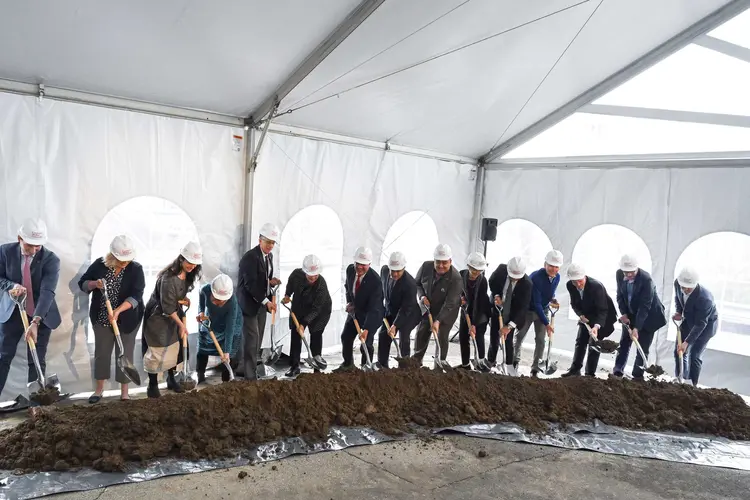Five CMU Researchers Receive Kaufman Foundation Grants
Media Inquiries
Five researchers at Carnegie Mellon University are among recipients of $2 million in grants, the Charles E. Kaufman Foundation announced today.
Catherine Armbruster, Jonathan Henninger; and Luisa Hiller, Phil Campbell and Xi Ren were awarded funding designated for faculty at Pennsylvania institutions conducting innovative, fundamental scientific research in the fields of biology, chemistry and physics.
New Investigator grants(opens in new window) support innovative scientists in Pennsylvania as they begin their careers as newly independent investigators. The funding empowers early career scientists to address fundamental questions through novel approaches with the potential for generating transformative intellectual advances.
A New Investigator grant of $150,000 over two years was awarded to Catherine Armbruster, (opens in new window)principal investigator and assistant professor in the Department of Biological Sciences at Carnegie Mellon University, for “Defining the role of bacterial population heterogeneity in ecological transitions.” This research utilizes Armbruster’s preliminary data and investigates the potential advantage of biofilm genetic diversity to survive transitions from one environment to another — such as moving from a water pipe into a human host. Recent work has shown that biofilms harbor elevated levels of genetic diversity, even among biofilms populated by just a single species of bacteria. This proposal aims to better understand the evolutionary consequences of this diversity.
A New Investigator grant of $150,000 over two years was awarded to Jonathan Henninger(opens in new window), principal investigator and assistant professor in the Department of Biological Sciences at Carnegie Mellon University, for “RNA-encoded enhancers and repressors in transcriptional control.” This research focuses on an overlooked gene expression regulation mechanism that Henninger discovered in which RNAs regulate their own production. Traditionally, it is believed that regulation of RNA production occurs primarily through the activity of specialized proteins that promote or repress gene expression. Henninger seeks to explore this newly discovered regulation mechanism by understanding how widely this mechanism is used in cells as well as the molecular basis for its function. If successful in whole or in part, it is the opinion of the Scientific Advisory Board that this project will cause a paradigm shift in how biologists think about gene expression regulation.
New Initiative grants(opens in new window) support the collaboration of investigators with strong research records to develop interdisciplinary, novel approaches to address fundamental scientific questions that require expertise beyond that of any single researcher.
A New Initiative grant of $300,000 over two years is awarded to Luisa Hiller(opens in new window), principal investigator and associate professor in the Department of Biological Sciences at CMU, Phil Campbell(opens in new window), co-investigator and research professor in the Department of Biomedical Engineering at Carnegie Mellon University, and Xi Ren(opens in new window), co-investigator and associate professor in the Department of Biomedical Engineering at Carnegie Mellon University, for “Extracellular Vesicles: messengers between kingdoms.” This research seeks to understand the immune consequences of the uptake of extracellular vesicles from the bacterium Streptococcus pneumoniae by mammalian cells. This proposal originated from an observation by Hiller’s lab in which Streptococcus pneumoniae, a bacterium not known to use extracellular vesicles, was observed interacting with mammalian cells in this way. Hiller observed altered immune signaling within those mammalian cells after the uptake of the bacterium’s extracellular vesicles. The proposal aims to investigate whether this is a closed loop in which only mammalian cells uptake the bacterium’s extracellular vesicles or whether bacteria also uptake mammalian vesicles and alter their behavior or physiology in response.





